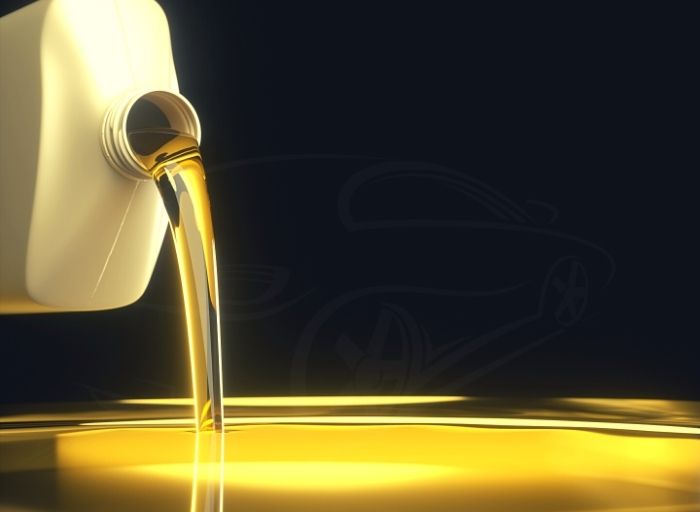
Oil must be added to engines to keep them lubricated and protected from damage. But what happens if you put too much oil in your car? Here are the signs and symptoms of the problem, as well as what to do if you’ve used too much oil and how to figure out how much oil your car requires.
Table of Contents
What Happens if You Put Too Much Oil in Your Car?
If there is too much oil in the engine, it can cause a variety of problems.
Oil that is foamy
Oil is added to a vehicle through the fill tube and into the oil pan, which is a reservoir. If the pan is overfilled, it will overflow, allowing oil to contact moving engine components it was not intended to contact.
The oil that reaches the crankshaft could be stirred up like milk in a foaming machine, despite the fact that it is circulated through the engine to maintain its parts.
Due to the aeration process, this could have the reverse effect of its original function and not lubricate required portions. Oil loses its lubricity and consequently its effectiveness as a result of this foaming.
There’s too much pressure
The engine and its mechanical components are protected to prevent water from entering and interfering with engine balancing or causing further damage. As a result, there is a lot of pressure in a lot of places inside the engine.
Similarly, the systems that deliver oil to required parts are pressured. Increases in part and general engine pressures can be caused by an increase in oil volume.
This may not be a concern in the short term, but if left unaddressed, it will undoubtedly cause problems.
Oil spills
Oil leaks are one of the immediate consequences of increased engine pressure. An engine consists of thousands of pieces that are sealed by gaskets and bolts, rather than being one large piece that contains all of the working parts.
Increased engine pressure can push the gaskets past their breaking point, causing them to leak or explode slowly. The consequence could range from a small trickle on the garage floor that goes unnoticed to a huge puddle of oil all over the engine.
Problems with spark plugs
Spark plug problems are usually caused by two factors: aging or fouling. Sparkplug fouling is frequently caused by extra gasoline or oil that isn’t completely consumed during the combustion process of the engine.
As a consequence, spark plug problems resulting from excess oil are frequently the result of long-term oil leaks and failure to address excess oil concerns. Because spark plug failures can cause major difficulties on their own, this can be a much more dangerous problem than leaking.
Spark plug fouling can cause fuel mileage to plummet, engine misfiring, as well as the engine totally stops while driving, in addition to being inconvenient and sometimes leading a vehicle to not start.
Problems with catalytic converters
The catalytic converter is crucial because it filters impurities from the exhaust before they are released into the atmosphere. However, the task it does leads itself to be clogged and burning surplus oil speeds up the process.
The check engine light may illuminate if the catalytic converter gets blocked, causing the vehicle to operate poorly and costing a lot of money to replace.
How to Tell If Your Engine Is Excessively Oiled
If you suspect your engine has too much oil, the simplest way to find out is to check the dipstick. This simple part is found in all types of cars, with the exception of some high-end exotic models, and characteristics low and high marks to show if your car has too much, too little, or the perfect amount of oil.
This simple part is found in all types of cars and characteristics low and high marks to tell if the car has too much, too little, or the right volume of oil. It’s a good idea to acquire the habit of monitoring the level on a regular basis, especially after an oil change. For exact instructions on how to check your car’s dipstick, consult your owner’s manual.
Other signs of an overfill problem include an oil leak, a burning odor, or a high oil pressure gauge reading. Excess oil touching the spark plugs and triggering a misfire could be the reason for your engine running rough or the check engine light turning on.
How Much Oil Does Your Vehicle Require?
The volume of oil required by automotive engines is around 4 to 8 liters. Although this varies widely between cars, in general:
- About 4.5 liters of oil is required by four-cylinder engines.
- About 5.5 liters of oil is used by six-cylinder engines.
- Engines with eight cylinders use 4.5 to 7.5 liters of fuel.
Before filling up or changing your oil, be sure you know how much you need. Read the lubrication section of your vehicle’s owner’s manual to see how much motor oil it requires. Next to the type of oil your engine requires, the quantity of oil needed should be listed in liters.
How to Get Rid of Excess Oil in Your Engine
If identified early enough, resolving an overfilling problem is simple. You’ll need to locate the drain plug and let out any excess oil, just as you would if you were changing the oil in the first place.
Depending on how severe the symptoms of overfilling become, the solution becomes more difficult. If you have any concerns about the sounds, or smells coming from your car when overfilling is detected, take it to a trusted mechanic.
Conclusion
What happens if you put too much oil in your car? Overfilling causes the oil to lose its lubricity due to foaming, increased engine pressures, and leakage. Allowing the excess oil to drain from the drain plug underneath the car can solve the problem if noticed early enough. Serious mechanical damage could result if not found in time, and repairs could differ based on the scope of the damage.
Hi there! I’m Naomi O’Colman. I’ve got years of experience working at an auto repair shop here in Texas under my belt. On top of that, ever since I was a kid I’ve been passionate about the auto industry. Since I’ve joined the team at automotivegearz.com I’ve been enthusiastically sharing my passion and insights with my readers. I’m dedicated to delivering high quality content and helping you stay up to date with the latest automotive trends and products out there!







